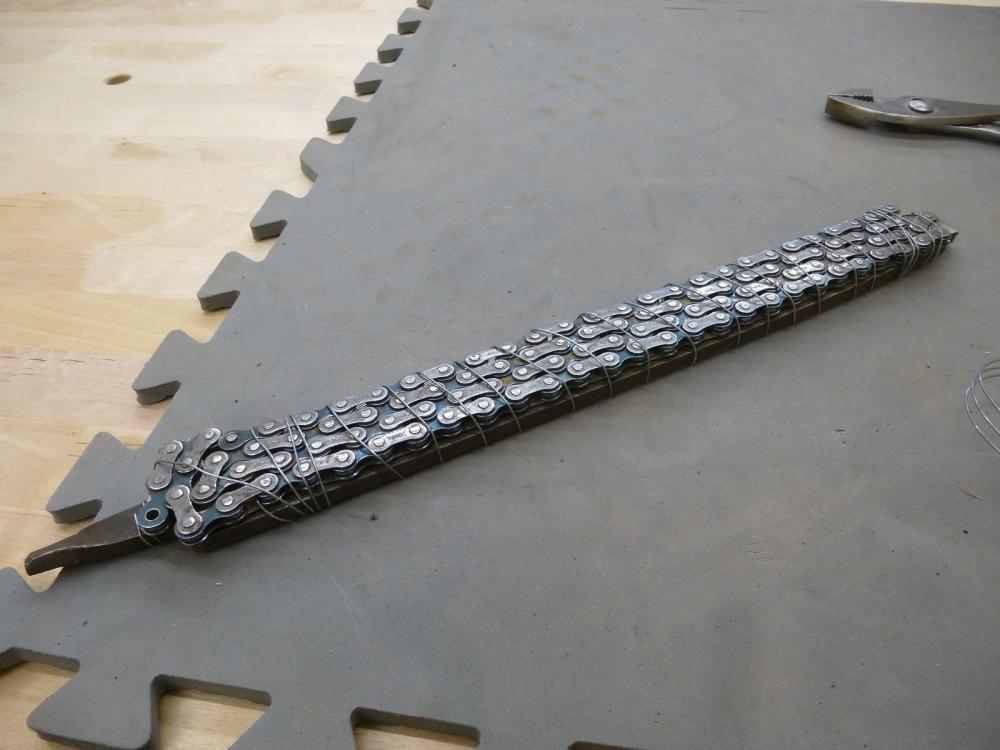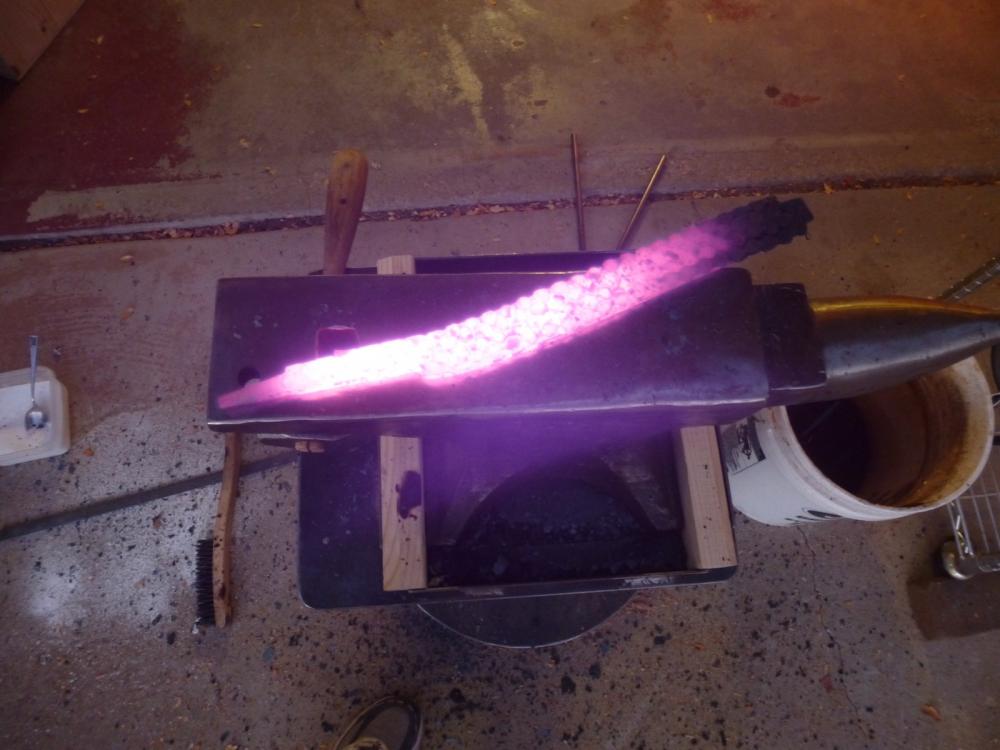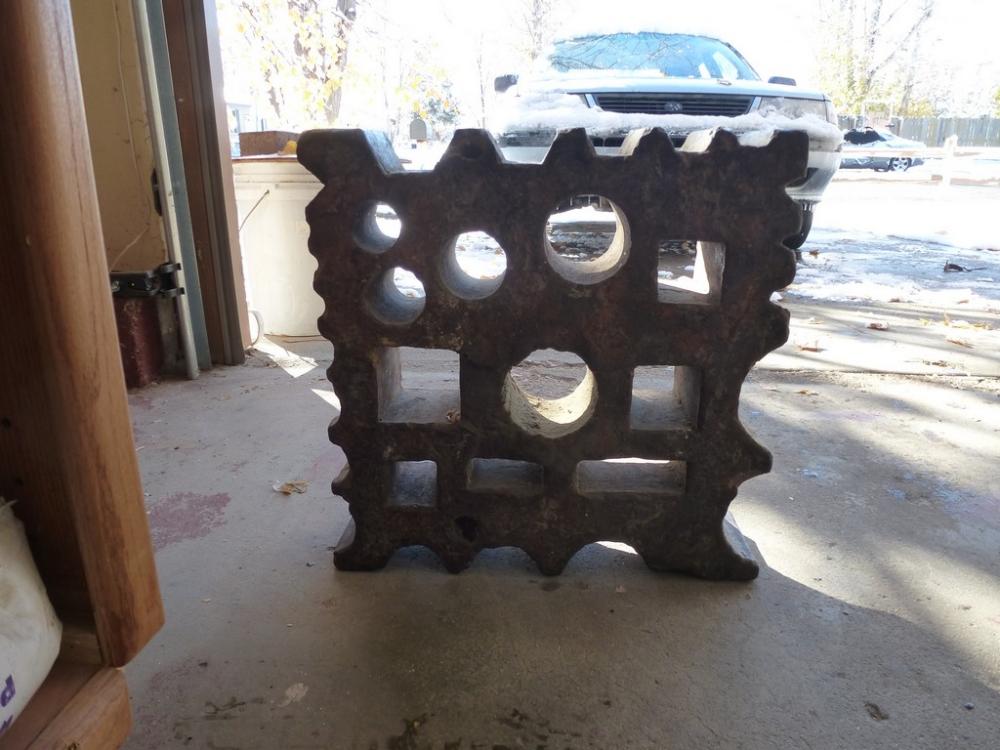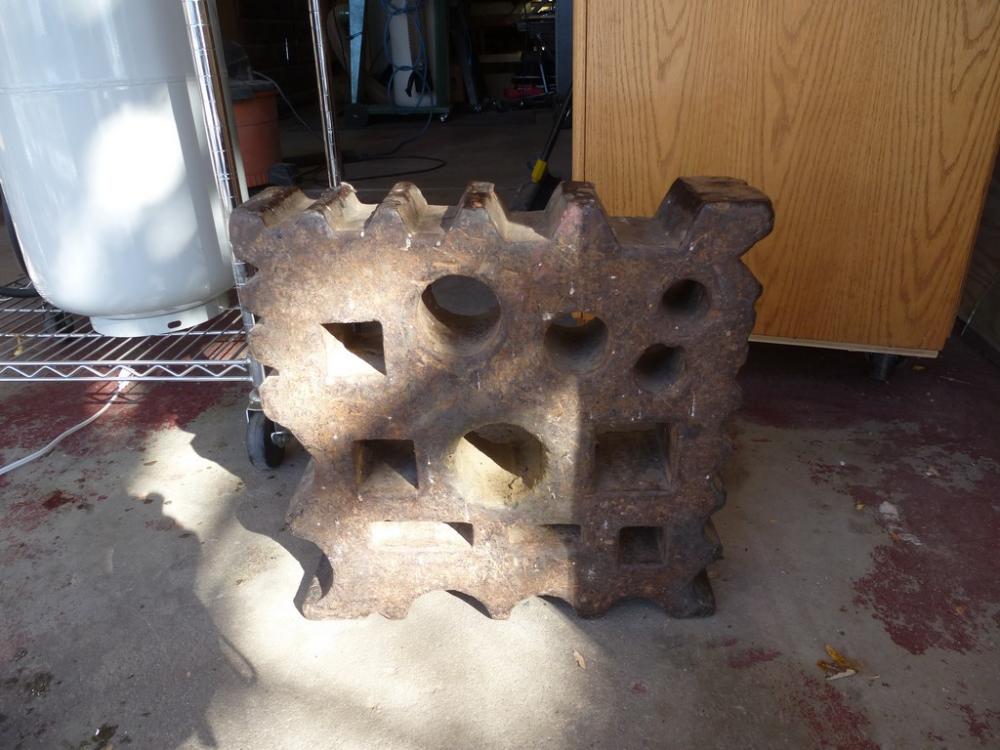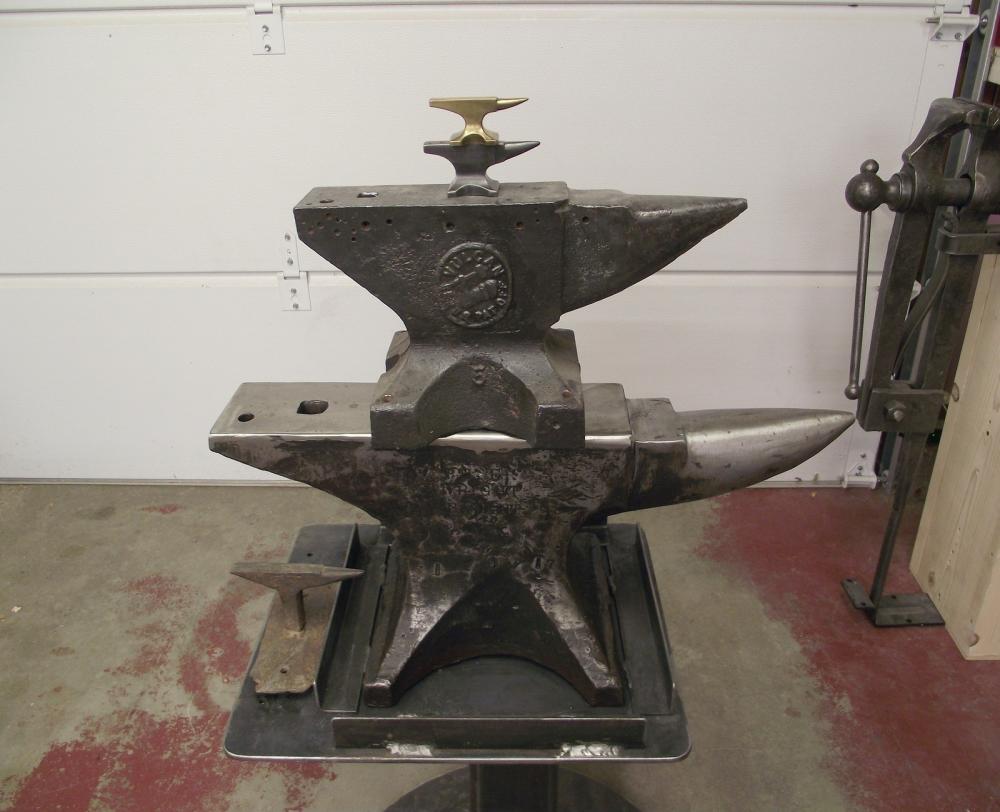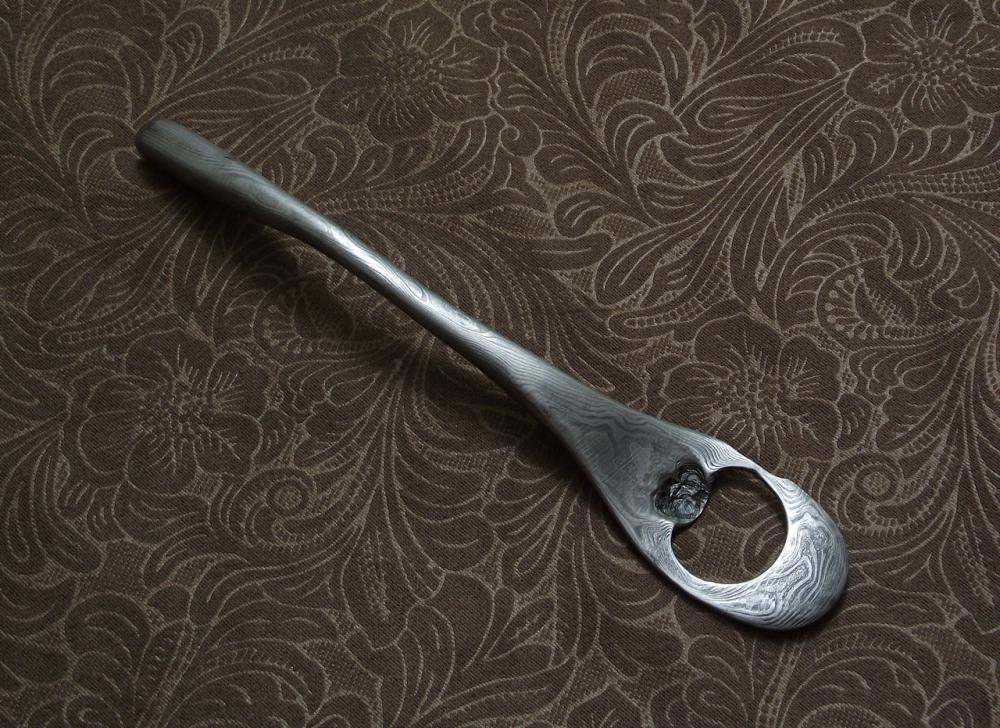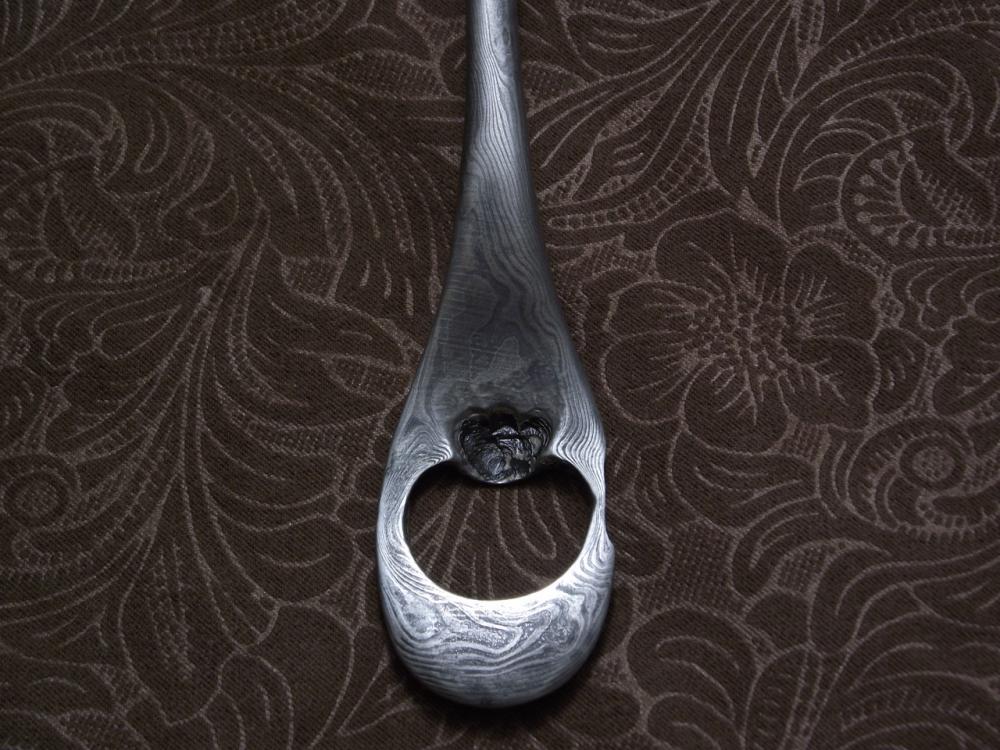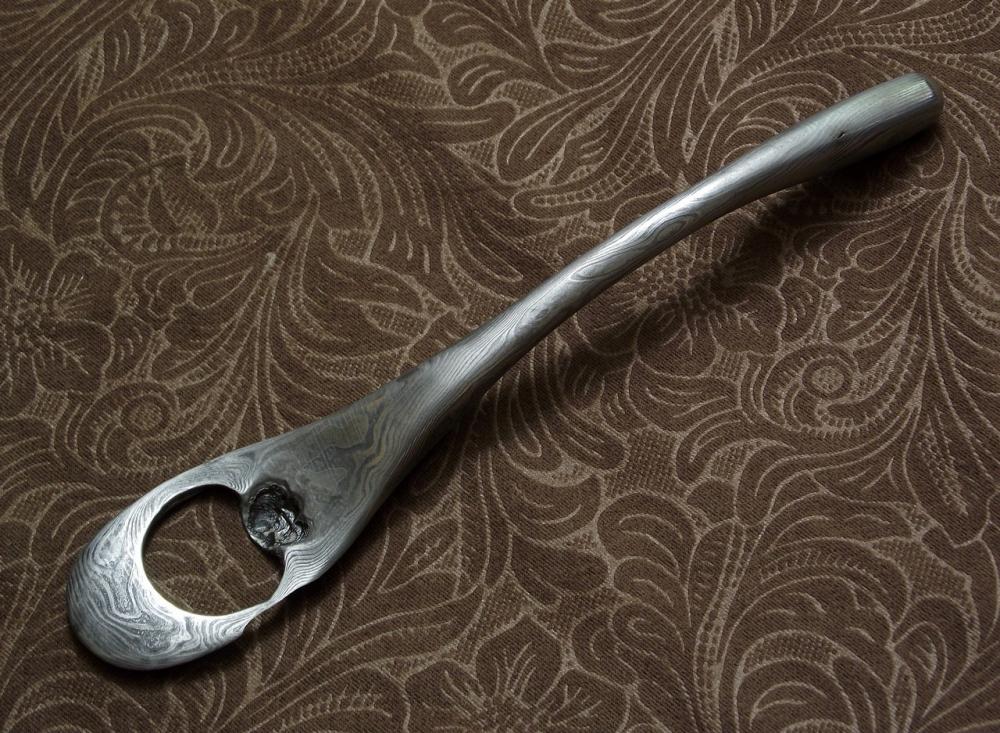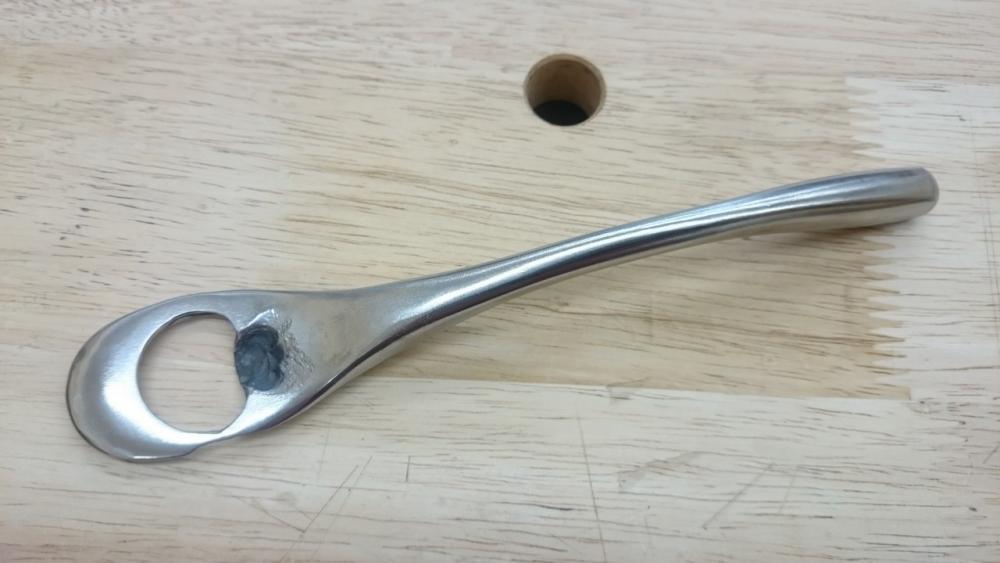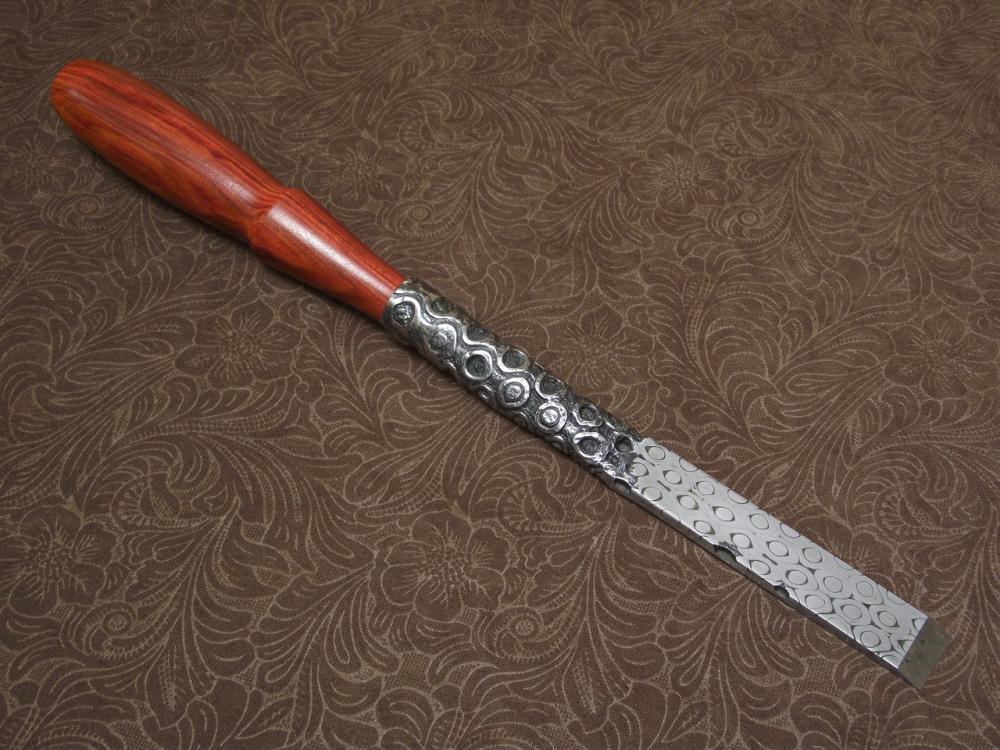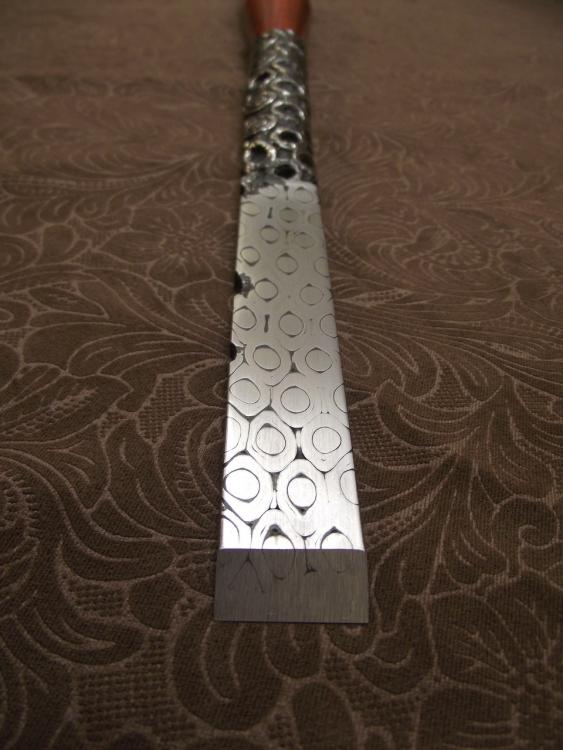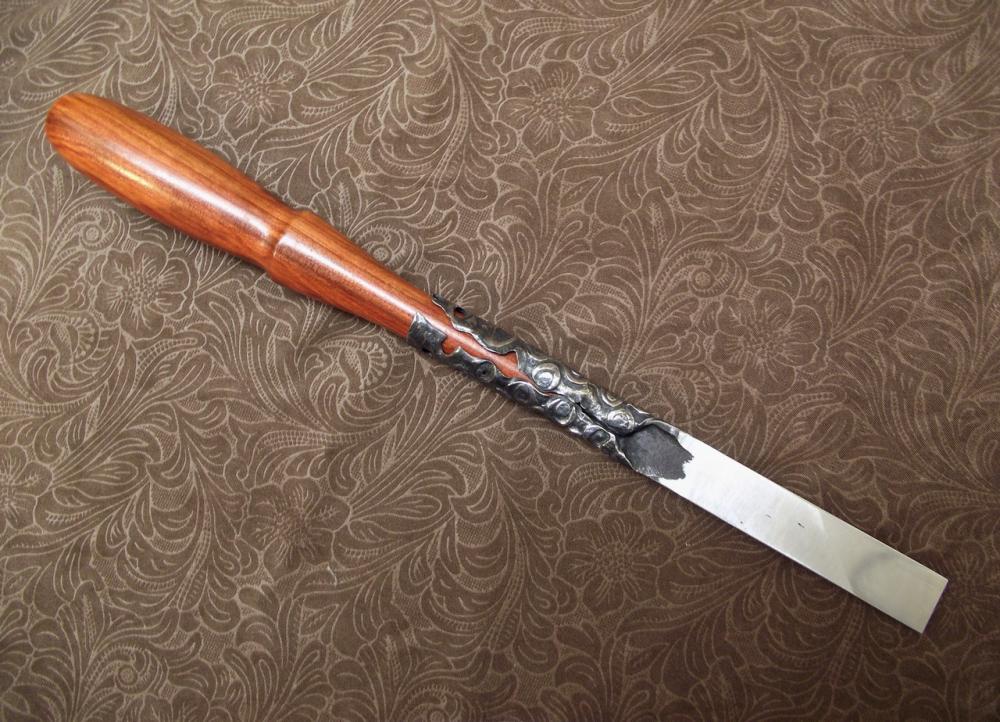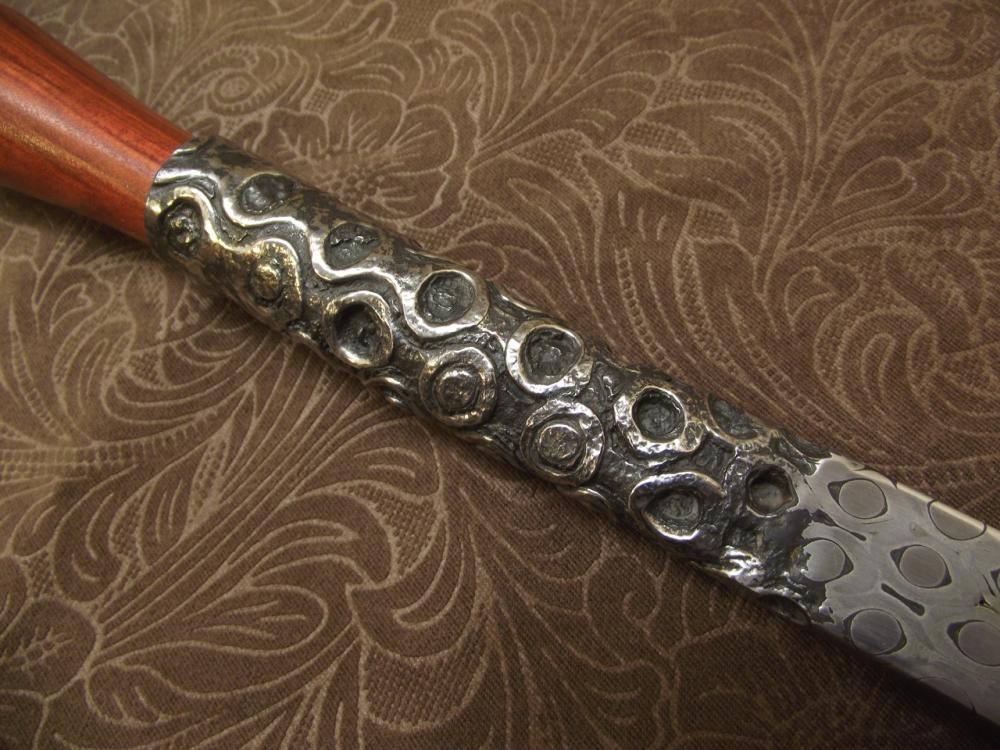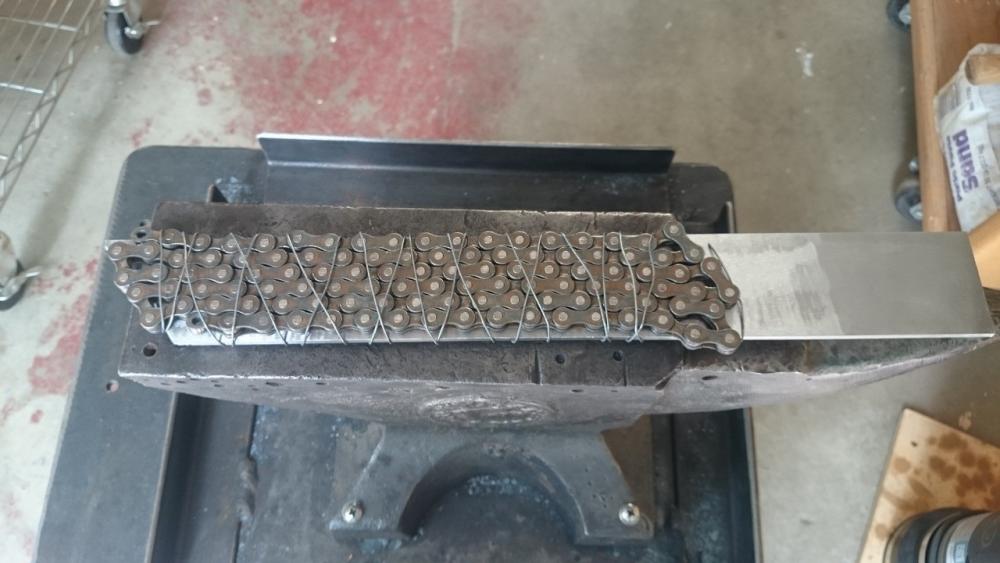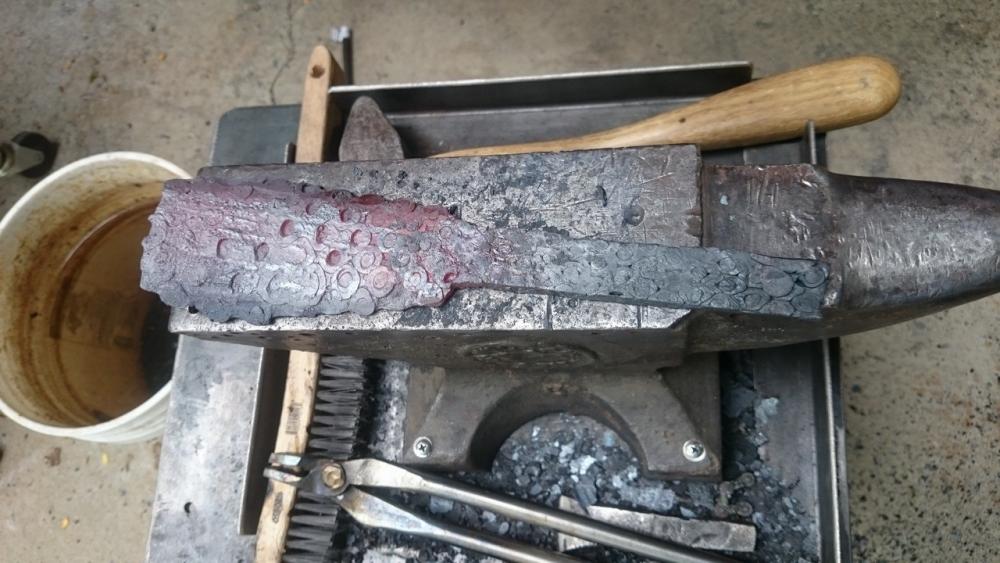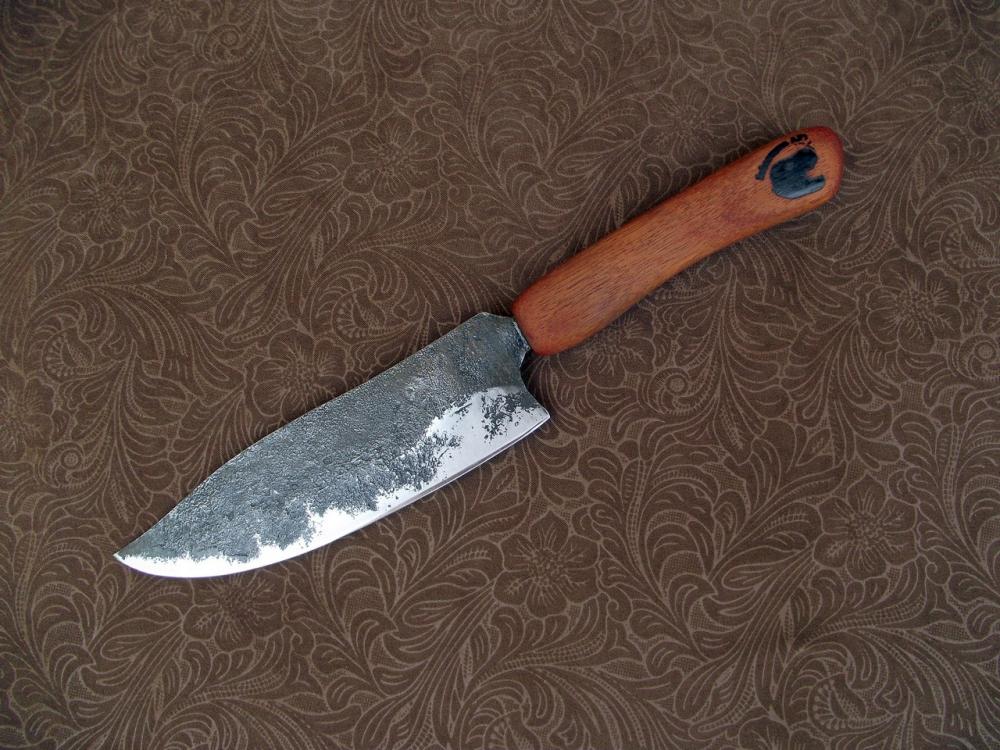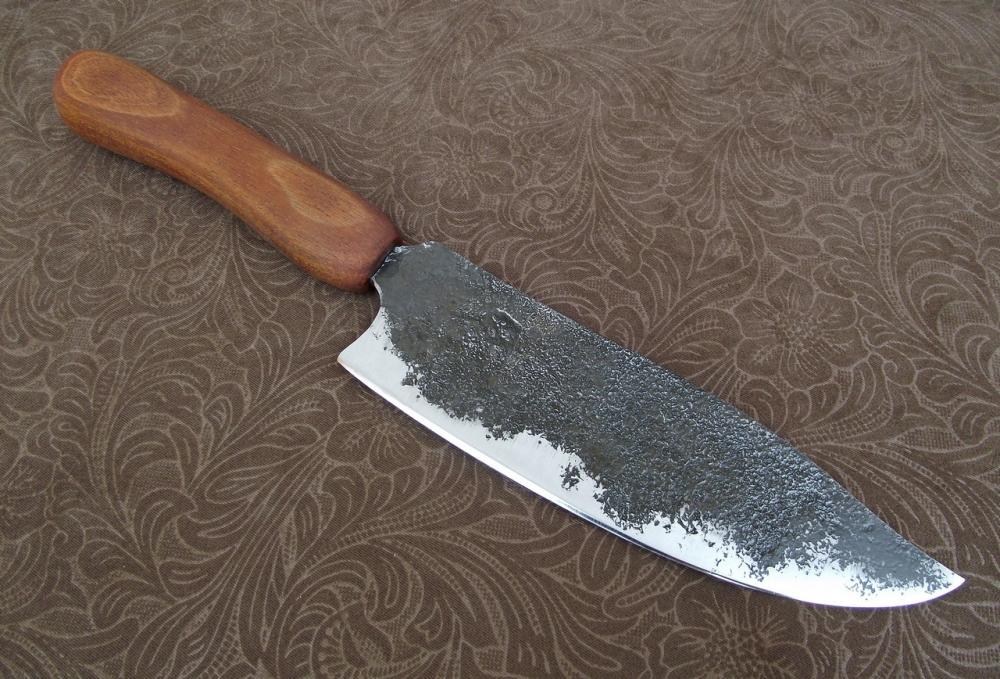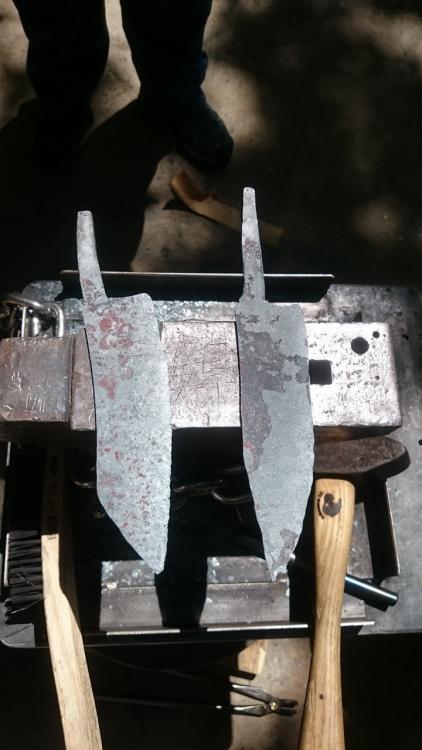-
Posts
170 -
Joined
-
Last visited
Content Type
Profiles
Forums
Articles
Gallery
Downloads
Events
Everything posted by bobasaurus
-

chain damascus drawknife in progress
bobasaurus replied to bobasaurus's topic in Chisels, Gouges, Scissors, etc
I purposefully avoided a curve, as I'm making this drawknife to trade with a fellow woodworker who wanted a straight blade. I'm going to make another for myself eventually that will likely have a curve. -

chain damascus drawknife in progress
bobasaurus replied to bobasaurus's topic in Chisels, Gouges, Scissors, etc
The wire does fizzle away pretty quickly, but it holds just long enough that I can do the first round of setting the weld. I need to get a mig or stick welder to help with this process. I wanted to draw it out to 8", but I think I only managed 7". -

chain damascus drawknife in progress
bobasaurus replied to bobasaurus's topic in Chisels, Gouges, Scissors, etc
The bevel isn't ground all the way yet, I just started it. But it is a bit thin at the edge, we'll see how it works. -
I've been working on this chain damascus drawknife. It started as a bicycle chain and a large old ARCADE bastard mill file. It took me three separate forging sessions, as there was more steel than I expected to draw out by hand and my arms are pretty lame. I now have the forging complete and the drawknife rough ground ready for HT.
-
That looks really amazing.
-
I hadn't heard about that, what a shady practice.
-
Hah, it was on proxibid. The auction happened to be in the next town over from me, so I just picked it up myself. I don't know anything about its origins, after wire wheeling I'll look for any makers marks.
-
I found this neat old swage block at a local auction for about $200 after all the taxes and fees. It's pretty big, probably weighs well over 100 lbs. A few corners are chipped and crumbling, but overall it looks very usable. I'll get out the wire wheel on the angle grinder this weekend and try to clean it. Looking forward to forging some large carving gouges with this thing.
-
Mine has a slight convex curvature on the flat back towards the edge, letting me rock it a bit to control the cut on the flat. This was less intentional than from my inability to grind a perfect flat without convexing it a bit.
-
It's a pulling motion, you draw it towards yourself while the piece is clamped in front of you. You can use it whatever way works, though. Sometimes you have to reverse direction on cranky wood grain. Never used 5160, but I suspect it might not have super edge retention from the somewhat low carbon content. If you're using it more for bark removal, it wouldn't matter.
-
I ground and sharpened it today. Still need to make handles... maybe not smart to sharpen it first, but I wanted to try it out.
-
Did you make that drawknife? It looks very clean compared to mine. If I had thought to forge shoulders into the handles then peening would work great... not sure what would keep the handles from riding up with my current forging. Maybe I'll try to get a tight fit and glue, then peen or thread on caps of some kind. Peening might be hard, since I made the whole thing from O1 and heat treated it all. I softened the handles with a torch some, we'll see if it was enough.
-
When you say riveted, are you inserting a rivet through both the handle and tang like a knife, or are you treating the tang like a large rivet and peening the end? I'm not sure what to do for the handles yet, honestly. I have a wood lathe, so I can turn them. Attaching will be tricky. I started with 1/2" diameter O1 drill rod.
-
Thanks stockmaker, never forged one of these before. There are a few problems, but it came out okay. After some grinding it will be a decent tool. Basically just winging it, though I have two commercial drawknifes I looked at beforehand as a rough reference. I splayed out the handles on this one to give more clearance, as the blade is pretty small. The blade curved when forging in the bevel, so I left it. I'm going to grind a flat on one side and a bevel on the other, and use it for all kinds of smaller woodworking tasks. The handles are angled more for bevel-down use than bevel-up.
-
-
Dang, that anvil tree is amazing. I think there should be a blacksmithing holiday where anvil stacking is part of the festivities. I used the new (to me) PW anvil today and it's very solid and has nice rebound. Sure beats the little vulcan. Edit: thought up a good name for the holiday: blacksmithmas.
-
I just bought this restored 129 lb Peter Wright anvil from a fellow member of the Rocky Mountain Tool Collectors. With the bearing test it bounces about 85% on every part of the face, and a small hammer bounces 1/3 of the drop distance (compared to about 40% and 1/10 on the little Vulcan). Tapping the sides, it rings well all the way around without sounding like there are any hidden cracks. The previous owner (and restorer) was a professional blacksmith that taught classes locally. I'm quite happy with it. Since I'm flush with anvils for the moment, I decided to take a family photo. The miniatures look pretty cute up there.
-

chain damascus socket chisel
bobasaurus replied to bobasaurus's topic in Chisels, Gouges, Scissors, etc
Thanks for all the great comments. Hi Brian. It's O1 steel at the cutting edge and throughout the backing, so I just did the standard HT for O1. I get it to about 1500 F, soak for as long as I can keep the forge there, then quench in slightly warmed canola oil. I tempered at 400 F in the kitchen oven for 2 hours, then did a differential temper to soften the socket and back of the chisel.- 11 replies
-
- chain damascus
- damascus
-
(and 2 more)
Tagged with:
-

Show me your Bottle Openers!
bobasaurus replied to Arbalist's topic in Blacksmithing, General Discussion
I made this damascus bottle opener from a bandsaw blade and pallet strapping. It was my first attempt at pattern welding layered steel, and went pretty smoothly. It got a little thin on one side, but seems to hold up in use. The strapping is mild steel. The old bandsaw blade could have been a number of things, possibly 15N20, but the etch didn't bring out much contrast so I suspect a different steel. I included a picture of it pre-etch, just because it was so nice and shiny. Maybe it's better to start at a coarser grit for etching though? -
Looks great, I might have to try making one. Was all the steel from the spike originally, or did you have to weld on extra? Seems like a lot to draw out from a single spike.
-
I forged this socket chisel/slick from a bicycle chain welded to an O1 steel backer. Heat treated it myself in the forge and my kitchen oven. The handle is redheart, finished with shellac and wax. This project was inspired by the Peter Ross DVD "Forging a Socket Chisel". Next time I'll try to get the socket to weld properly, but it seems to hold the handle very tightly regardless.
- 11 replies
-
- chain damascus
- damascus
-
(and 2 more)
Tagged with:
-
The texture does take a bit more washing than a smooth knife. Keeps things from sticking to it, though.
-
I forged this chef knife from O1 steel and made the handle from African mahogany. Did the heat treatment myself in the forge and kitchen oven. I was aiming to make a santoku, but the edge came out a bit too curvy. Still, I like the shape. The pointy tip is useful for opening food packaging. My sister forged one at the same time, though finishing hers is still in progress.
-
Those look awesome. The brass horns and the ring really stand out.
-

Forged Stainless Steel Base For Picture Frame
bobasaurus replied to 7A749's topic in Member Projects
That's a lot of forming steps and a very good polish. Any health issues working with stainless?

